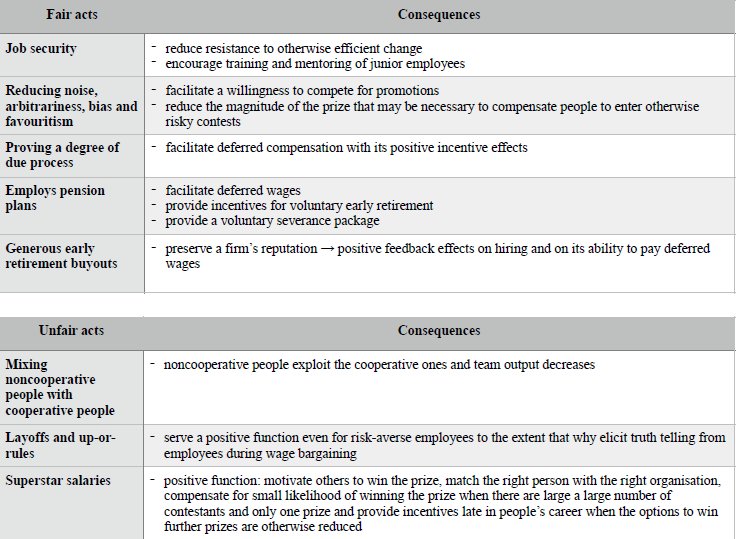Compensations That Motivate Employees
By: Together Abroad 30-11-2017
Categories:** HR Compensations & Benefits, ** HR daily news,

Many companies – large and small, seem to be driven by the concept “pay for performance”. The popular understanding of its meaning reflects the longstanding belief in the corporate world that financial incentives are the most powerful motivator of executive performance.
Yet the findings of various studies by behavioral psychologists suggest otherwise. These findings have profound implications, for they raise questions about the motivational rationale underlying incentive compensation programs.
A meta-analysis by Jenkins and co. tried to ascertain whether, and how strongly, financial incentives are related to performance quantity and quality. They were aware of the well-established view that financial incentives are directly related to performance, and that they might decrease intrinsic motivation, since incentives control employees externally and could result in decreased self-determination. After reviewing 39 studies, they determined that the relationship between financial incentives and performance quality is not significantly different from zero. This means that financial incentives are related to performance quantity instead of performance quality. Financial incentives may jeopardize intrinsic motivation, but their correlation with performance quantity is more positive than negative.
What is also an important factor in an employee’s satisfaction with their pay is the perceived fairness, according to Glomb and Kemmeyer-Mueller. Perceived fairness is partly based on equity theory, which does not make specific predictions about the relationship between incentives and performance, but rather about fairness and performance. Take for example an employee who perceives his or her effort to perform a task as high, and the pay he or she gets as low, while believing that his or her colleagues receive much more pay in exchange for the same effort level. If such dissonance occurs, the person might try to restore the balance by changing inputs and/or outcomes. He or she may further cognitively reinterpret the situation, may change the referent and may withdraw from the situation altogether. Evidence shows that most effects occur in the under-rewarded condition. Under-rewarded subjects with strong performance reward expectancies will increase their performance because they believe they can earn more eventually. They tend to engage in utilitarian, egoistic behaviors that are expected to lead to a future higher reward.
Perceived fairness may also lead to retaliation; for example, less commitment, less willingness to work more hours, thefts and brief spells of illness. Hence, the consequences of the fair or unfair acts are for both the employee and the employer (Figure 1). Perceptions of inequity and unfairness affect the relationship between effort and compensation. It also affects people’s work attitude, the degree of satisfaction, commitment, organization citizenship behavior and the like.

Fig.1
Donald Delves mentions another interesting research in his article for Forbes. In the 1950s, researcher Harry Harlow observed the behavior of monkeys performing relatively complex tasks. Based on these observations, Harlow postulated that the very performance of these tasks was its own reward – the monkeys were driven by “intrinsic motivation”. Unfortunately, Harlow did not pursue his discovery any further – perhaps because it was too threatening to 1950s beliefs about motivating people with “extrinsic” rewards, or money.
Nearly half a century after Harlow, psychological researchers comprehensively analyzed the results of 128 laboratory studies into the relationships between incentives, motivation, and performance. Their findings concerning intrinsic motivation not only confirmed Harlow’s, but they also showed that incentive-based rewards could actually lower performance. They have found that external incentives can work against the inherent motivator of autonomy, our basic need to feel that we are in charge of our own destiny. Autonomy, relatedness (connection with others) and competence (a sense of mastery, accomplishment, and achievement) are the core human needs and key intrinsic motivators at the heart of what is known as self-determination theory (SDT).
The larger issue is how to provide effective intrinsic motivation and tap the truly creative and innovative power of individuals and organizations. SDT research shows that people perform much better when they feel that their personal values and ideals are aligned with those of their organization, and where they derive meaning from pursuing the company’s mission. They also perform better when they feel a connection with other people and in environments where they develop a sense of mastery or competence. It suggests that teamwork and employee development are more critical to performance than lucrative monetary incentives. Hence, giving employee praise or conducting team-building events might be a good idea. Additionally, showing trust and asking for their opinion might turn an unmotivated employee into a motivated one.
Nonetheless, people do work for money and most of us enjoy spending it, so a combination of monetary rewards and the softer motivational tools may be most effective. In the real world, the line between intrinsic and extrinsic motivation may not be as bright as it is for psychologists studying these phenomena in laboratories, where all variables are known and quantified. At the end of the day, people are variables that are neither stable nor quantifiable by statistical tests.
Nesrin Nazlieva